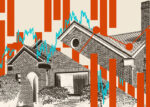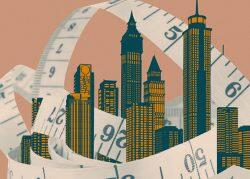To see the last time housing affordability was this low, you would have to go back to the early days of the George Bush administration — the first one.
Housing affordability hit its lowest point since 1989 in June, the Wall Street Journal reported. That’s according to an index kept by the National Association of Realtors, which considers income, mortgage rates and sale prices of existing homes.
Record home prices are one of the factors that have pushed buyers, particularly first-time buyers, out of the market. According to NAR, existing home prices have soared 46 percent in the past three years, hitting a median of $423,300 in June.
Mortgage rates, which were historically low during the early months of the pandemic, also soared amid rate hikes from the Federal Reserve first implemented rate hikes. After ending last year at 3.1 percent, the average mortgage rate was 5.6 percent in June.
These two factors, along with inflation, low inventory and other economic headwinds, are leading to a slowdown in the housing market. Redfin reported Friday that homebuyer competition fell to its lowest levels since the beginning of the pandemic, likely because fewer people are in a position to buy.
Read more



The good news for Americans is that a July affordability report would probably not match the frenzy recorded in June, as mortgage rates are tempering. While they remain highly volatile, the mortgage rate was at 5.22 percent this week.
“Thankfully, the worst in affordability could already be over for this cycle,” NAR chief economist Lawrence Yun said. “Mortgage rates have calmed down in recent weeks, and the consistent wage growth … is narrowing the gap with home-price growth.”
Still, there’s a growing body of evidence that many buyers are experiencing some of the worst affordability problems of a generation. Zillow reported in May housing affordability reached its lowest point since 2007, when the company started tracking the metric.
Consumers are fretting. Recent data from the Federal National Mortgage Association noted that consumers were more pessimistic about housing than any time since 2011, when the global financial crisis caused prices to bottom out, amid heightened concerns about home affordability and job security.
— Holden Walter-Warner
